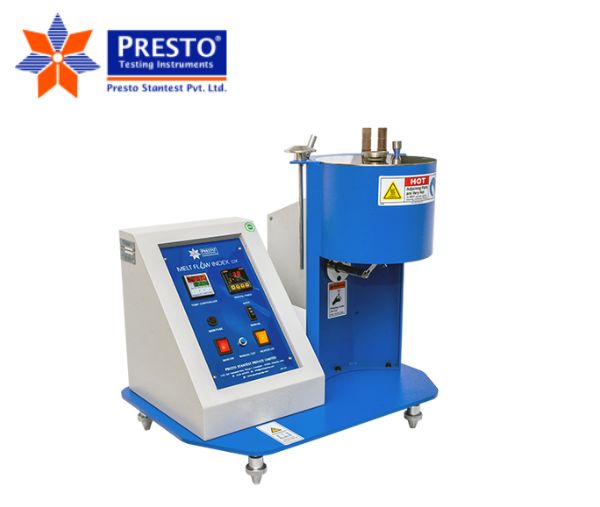THE ESSENTIAL ROLE OF MELT FLOW INDEXERS IN MATERIAL TESTING

Do you know the major role of a melt flow indexer? Understanding how a material behaves during processing in measuring its flow properties is important. It is one of the most critical steps. Here comes the main role of the Melt Flow Index (MFI) testing! The process of how plastic material melts and flows under specific conditions of temperature is recorded.
Manufacturers can predict processing behavior and end-product quality more reliably by understanding melt flow indexers. This article is the best for you to understand this instrument in detail.
Role of Melt Flow Indexer in Process Control
The melt flow indexer is a powerful tool in quality assurance and process control. The key roles are as follows:-
- Consistency across batches
Manufacturers often produce large volumes of plastic resins. Using a melt flow index test helps ensure that every batch meets the same processing and performance standards. Any major variation in the melt flow index can point to inconsistencies.
- Material identification
A melt flow index test can help identify the correct material when multiple similar-looking polymers are available. So identifying material flow characteristics is essential.
- Supplier verification
Quality assurance teams often use melt flow index testing to validate that supplied raw materials match the technical data sheets provided by vendors. It can flag potential quality issues before production begins if the measured value is out of range.
- Production monitoring
The real-time quality control can be improved by periodically checking melt flow index values. Operators can take quick corrective actions if there is a deviation.
Key Components of a Melt Flow Indexer
- Barrel and die assembly
This is the core heating zone where the polymer sample is loaded. It is made from hardened steel and fitted with a standard-sized die at the bottom.
- Heated chamber
The temperature-controlled barrel maintains a precise temperature depending on the polymer being tested.
- Piston or plunger
This is a steel rod with a weight attached that applies pressure to push the molten polymer.
- Load weights
Different standardized weights are used to simulate varying pressure conditions.
- Timing and cut-off mechanism
Either manual or automatic timers are used to determine how much material flows within a set time period.
Calibration Protocols and Maintenance Best Practices
Proper calibration and maintenance ensure accurate test results and long-term performance of the melt flow indexer. Some of the basic tips are listed below:-
Calibration protocols
- Use certified reference materials – Always verify results using standard materials with known melt flow index values.
- Temperature accuracy check – Regularly verify that the heating chamber maintains the set temperature within the acceptable tolerance range.
- Timer and weight calibration – Ensure the built-in timer and weights used for testing are periodically inspected and calibrated as per the requisite standards.
Maintenance Best Practices
- Clean after every use – Residual polymer can affect future test results. So make sure to clean the barrel and piston after each test.
- Prevent corrosion – Avoid moisture exposure and store components in a dry environment.
- Annual servicing – Schedule an annual inspection by a certified technician to ensure all electronic systems are working efficiently.
Selecting the Right Melt Flow Indexer
Choosing the best melt flow indexer depends on the following simple guidelines:-
- Testing Volume
The semi-automatic or fully automatic indexers are ideal for settings where a large number of tests need to be done quickly. The manual models are best suited for small labs where occasional testing needs to be done.
- Polymer Types
Some machines are better suited for high temperatures while others are ideal for standard resins. Always confirm beforehand that the indexer supports your target materials.
- Compliance with standards
Ensure the equipment perfectly meets the industry testing norms depending on your quality system.
- Ease of operation
A simple interface, clear temperature controls and guided test procedures reduce errors and training time. So opt for an instrument with a user-friendly interface and controls.
- Data management
Look for models with digital output, USB connectivity or PC software integration if your quality assurance process involves record-keeping or reporting.
- Manufacturer support
Go for a supplier that provides local technical support, spare parts availability and calibration services. Good manufacturer support is a must for reliable operation and minimizing downtime of your melt flow indexer.
Conclusion
In conclusion, the melt flow indexer is the most standard tool and it plays a huge role in maintaining product quality and production efficiency. It greatly helps businesses detect material inconsistencies and ensure compliance with global standards.
Invest in the precise melt flow indexer to attain product excellence. So hurry and check out the latest melt flow indexer price in uae today!




